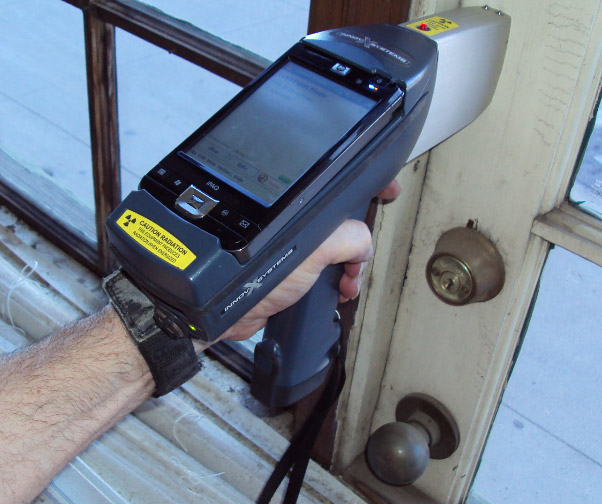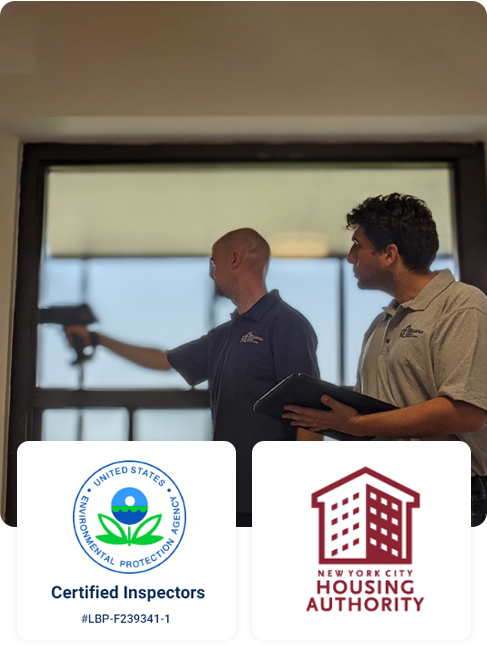Lead Paint Removal Service-- NYC's Trusted Solutions for Lead Safety
Lead Paint Removal Service-- NYC's Trusted Solutions for Lead Safety
Blog Article
Step-by-Step Refine for Effective Lead Infraction Remediation
Following this, adherence to government and state guidelines is vital to creating a reliable removal strategy. The actual removal needs skilled employees to implement these strategies while purely complying with safety protocols. What occurs after the removal is finished?

Discovery and Assessment
Detection and evaluation are critical action in the remediation of lead violations. To ensure an efficient removal procedure, it is important to conduct a complete exam of the setting where potential lead direct exposure exists. The preliminary stage of discovery involves identifying sources of lead contamination, which can be discovered in paint, water pipes, dirt, and dust. Using sophisticated diagnostic tools such as X-ray fluorescence (XRF) analyzers and atomic absorption spectroscopy (AAS) can supply accurate dimensions of lead concentrations.
This consists of reviewing the extent and extent of contamination, as well as recognizing populaces at danger, specifically kids and pregnant females. The gathered data ought to be meticulously documented to sustain the growth of an effective remediation technique.
Additionally, it is imperative to prioritize areas with the highest degree of contamination and those that present the biggest wellness dangers. Efficient interaction with stakeholders, including homeowner, homeowners, and public health authorities, is critical for ensuring that all celebrations are informed about the findings and the succeeding actions required for remediation. This first detection and evaluation stage lays the foundation for an effective lead infraction remediation process.

Legal and Regulatory Compliance
Browsing the landscape of legal and regulatory compliance is a pivotal aspect of effective lead violation removal. Compliance ensures not just the safety of damaged populations but likewise the trustworthiness and legal standing of the organization responsible for removal. Regulations regulating lead contamination are multifaceted, including government, state, and regional regulations. At the federal degree, the Epa (EPA) sets rigid standards under the Hazardous Substances Control Act (TSCA) and the Lead-Based Paint Restoration, Repair, and Painting Regulation (RRP Rule)
State and local guidelines can differ, commonly enforcing added commitments or even more rigid requirements. Consequently, a thorough understanding of all relevant lawful structures is crucial. This involves meticulous documentation of all removal tasks to show conformity. Failure to comply with these policies can result in severe fines, consisting of large fines, lawful action, and reputational damage.
Engaging lawful professionals specialized in ecological regulation can help with navigating these intricacies. Routine training and certification for all employees associated with the remediation procedure are likewise necessary to ensure adherence to safety and security and regulative standards. By focusing on legal and regulatory conformity, organizations can properly minimize dangers and achieve an effective remediation result.
Planning the Removal
Efficiently intending the remediation of lead offenses begins with a thorough evaluation of the contaminated site. This first evaluation needs to include a thorough site examination to identify the degree and focus of lead contamination. Comprehensive sampling and lab evaluation are critical to develop an accurate contamination account. This data-driven strategy guarantees that removal initiatives are properly targeted and reliable.
Once the contamination is mapped, a danger analysis need to be conducted to assess prospective wellness threats to humans and the environment. Lead Violation Removal in NYC. This evaluation ought to think about variables such as exposure paths, populace vulnerability, and ecological effects. The understandings collected will certainly create the basis for picking an appropriate remediation strategy
Subsequently, setting clear, achievable objectives for the remediation project is important. These goals must line up with governing requirements and stakeholder assumptions to make sure conformity and neighborhood acceptance. Developing a comprehensive remediation plan that outlines methods, timelines, and source appropriation will certainly assist in a structured method to the cleanup process.
In addition, it is vital to involve with stakeholders early and keep transparent communication throughout the planning stage. This consists of informing local areas, getting needed licenses, and coordinating with governing companies to guarantee all legal and additional reading step-by-step demands are met. A well-crafted removal plan not only resolves the contamination successfully but additionally develops count on and cooperation amongst all parties entailed.
Carrying Out the Remediation
With a well-structured removal plan in area, the focus changes to the actual implementation of the remediation tasks. This phase entails activating the necessary sources, consisting of proficient personnel, customized equipment, and high-grade materials. Begin by plainly delineating functions and responsibilities to make certain accountability and smooth coordination among staff member.
This consists of establishing up control locations to prevent lead dust and debris from spreading, as well as utilizing air filtering Go Here systems to keep air top quality. Make use of methods such as wet scraping, chemical stripping, or encapsulation, depending on the seriousness and place of the contamination.
Throughout the removal procedure, conduct regular examinations and air top quality monitoring to ensure compliance with regulatory standards. Effective communication with stakeholders, consisting of homeowner and residents, is important to keep them notified of progress and any unexpected developments. By meticulously adhering to these actions, the removal activities can be performed efficiently and successfully, eventually mitigating lead dangers.
Post-Remediation Methods
Post-remediation techniques play a vital role in ensuring the lasting success of lead offense remediation efforts. These approaches include continuous monitoring, upkeep, and neighborhood education to stop future lead direct exposure and guarantee a safe setting.
First, routine monitoring is crucial. This includes periodic screening of the previously influenced locations to guarantee that lead levels remain within risk-free restrictions. Homeowner ought to establish a schedule for these examinations, ideally in cooperation with licensed ecological experts.

Third, educating the site area plays an essential role in maintaining the advantages of remediation. Homeowners and residential property managers must be informed regarding the risks of lead direct exposure and the best methods for maintaining a lead-safe atmosphere. Workshops, educational pamphlets, and area meetings can be efficient devices for disseminating this info.
Verdict
Successful lead infraction removal needs a thorough, organized strategy encompassing detection and assessment of contamination, adherence to lawful and regulatory requirements, precise preparation, and reliable implementation of removal initiatives. This systematic procedure highlights the value of thoroughness and caution in resolving and minimizing lead contamination.
Report this page